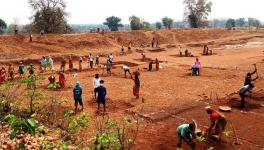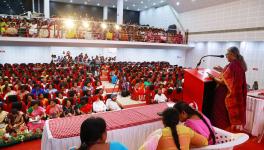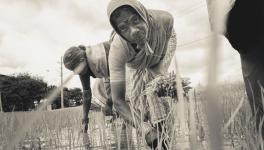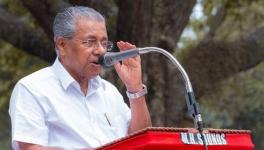‘Modi’s Guarantee’: The Grim Reality of Rural & Agri Workers
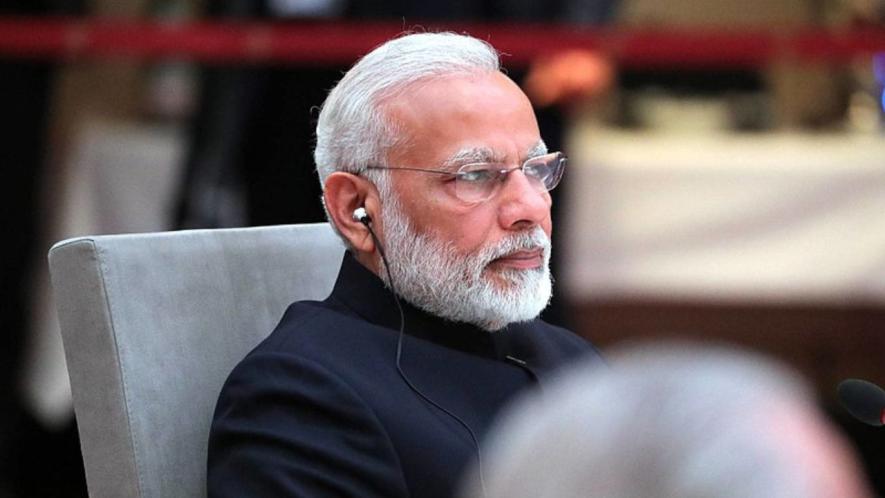
Image Courtesy: Wikimedia Commons
India, the largest democracy in the world, is going for Parliamentary elections very soon. Elections are times when there is an evaluation of the performances of the Government, their promises in the election manifesto, and the implementation of these performances.
Ironically, the Narendra Modi-led Bharatiya Janata Party (BJP) government is projecting India as the ‘Mother of Democracy’ but the real issues of voters and citizens and their rights are missing from its election campaign.
In the past 10 years of Modi rule, we have witnessed how a narrative is built by the ruling party using its robust propaganda machinery and corporate-controlled media in favour of BJP. This propaganda is so packaged so well that even well-educated youth and the middle class have become prey to it.
This year, we are witnessing a new term, ‘Modi’s Guarantee’. Citizens are being forced to listen and believe this campaign tagline frequently. Big claims are being made for every section of society under this campaign, with the help of a lucrative digital machinery. Under this shining campaign, there is an effort to bury the reality of the citizens with the help of millions of funds collected from donations and extortion from corporates through the unconstitutional electoral bonds.
Let us make an effort to check some of the claims being made under the ‘Modi’s Guarantee’ campaign for rural and agricultural workers vis-à-vis the ground reality.
‘Modi’s Guarantee’ of Increased Income of Rural Masses
Reality: The neoliberal economic policies adopted by the BJP-led Central government are deepening the agrarian crisis, resulting in huge unemployment in rural India. Coupled with the use of labour displacing technology, manual work in the farm sector has reduced to a minimal level.
The wages for the major agricultural and non-agricultural occupations have declined by 3% per annum from 2013-14 to 2018-19. The main reason for the decline in rural wages were demonetisation, roll out of GST (goods and services tax) and reduction in Budget allocation for many social security schemes, including MGNREGA (the rural job guarantee scheme), and cuts in subsidies.
A sharp deceleration in the growth of wage rates for major rural occupations at the all-India level was seen from the time of the lockdown, but the deceleration had started much before the COVID-19 pandemic, from June 2019.
An ILO (International Labour Organisation) working paper also points to negative trends in the purchasing power of rural Indian wages in recent years. It says, “Drawing on inflation data, together with the rural monthly wage index published by the Indian Labour Bureau, the Ministry of Finance has observed negative trends in the purchasing power of rural Indian wages in recent years. Thus, in its Economic Survey 2022-23, the Ministry highlighted a negative growth in real rural wages (that is, rural wages adjusted for inflation) due to elevated inflation between April and November 2022.”
A recently released study by the Reserve Bank of India has revealed that workers in the three BJP-ruled states of Gujarat, Madhya Pradesh, and Uttar Pradesh, are getting daily wages much below the national average. The farm workers in Gujarat get a daily wage of Rs. 241.9, which is Rs 100 below the national average of Rs.345.7. Madhya Pradesh has the lowest wage at Rs. 221.9. Kerala pays the highest daily wage to workers- Rs. 764.3 for farm workers and Rs. 852.5 for construction workers.
‘Modi’s Guarantee’: Increased Budget for MGNREGA
Reality: Despite MGNREGA proving its importance for the livelihood of the rural poor and the rural economy, the Modi-led BJP government is working to kill off the scheme. Neoliberal economic policies are the guiding force of the Modi government, which not only consider MGNREGA unnecessary but also a hurdle for the so-called economic growth of the country.
This demand-driven employment scheme has been weakened by the Modi regime through inadequate funding, low wage rates, undermining social audit infrastructure, discouraging both workers and local officials of MGNREGA, and most importantly, the recent changes made in the (online) attendance, (caste wise) fund allocation and ABPS (Aadhaar-based Payment System) wage disbursement. According to data provided by LibTech India, a consortium of academics and activists, as many as 7.6 crore job cards have been deleted from the system over the last 21 months.
The major attack on MGNREGA by the BJP government is the continuous denial for the adequate fund allocation in successive Union budgets. In fact, overall allocation for MGNREGA as a proportion of total budget has decreased. The rural job scheme had 1.98% share of the total budget in 2013-14. This has come down to 1.33% of the total budget for 2023-24. There is zero increase in allocation in comparison to the revised estimates for the current financial year (2023-24).
In the interim budget, Rs 86,000 crore has been allocated for MGNREGA while for the current year, the total expenditure on MGNREGA so far has been ₹ 88,309.72 crore. The Parliamentary Standing Committee on Rural Development has also observed, “A reduced budget at the outset of the financial year for MGNREGA has a “cascading effect on various important aspects” of the programme and a telling impact on its progress.
As a result, despite guarantee of 100 days of work, the average working days provided under MGNREGA never crossed 50, except in the pandemic year 2020-2021 (51.52 days) under the Modi regime. Last year, the average working days were only 47. This is also resulting in low wages and a huge delay in wages. The average daily wages paid to workers under MGNREGA are Rs 208 in 2021-2022, Rs 216.57 in Rs 2022-23. This year also, the increase in the wages is miniscule and inadequate to fulfil the objective of the scheme.
Section 6 of the MGNREGA Act, 2005, makes a provision that notwithstanding anything contained in the Minimum Wages Act, 1948, the Central government, may by notification, specify the wage rate for the purposes of the Act which may be different for different areas. The provision further implies that the wages so notified shall not be less than the wages guaranteed under Minimum Wages Act for agricultural labourers.
The Parliamentary Standing Committee on Rural Development and Panchayati Raj, in its report (placed in Parliament on February 8, 2024) has recommended that observing the quantum of wages since 2008, it found the wages inadequate and not in consonance with the rising cost of living. At this juncture, agricultural labourers and other labourers involved in masonry/miscellaneous works command a daily wage more than the wage guaranteed under MGNREGA.
Further the committee felt that the need for having a wage guaranteeing rural employment scheme of such a grand scale emanated from the need for providing a sense of security in terms of employment and wage to poor people in rural areas who do not have any other job avenues. The Central government committee on minimum wages, the Anoop Satpathy Committee, had also recommended that the wages under MGNREGA should be minimum Rs 375/day.
The Modi government has completely ignored the findings and recommendation of the Standing Committee on Rural Development and Panchayati Raj and is working in the interest of the big corporates and landlords who are in principle opposed to MGNREGA.
‘Modi’s Guarantee’: Social Security for All Rural Masses
Reality: Under conditions of low income and huge unemployment, the lives of agricultural workers greatly depend on welfare schemes and public sector institutions of the social welfare state. But the entire concept of a social welfare state is unacceptable to both foreign and Indian capital. With the exception of the Left Democratic Front-led Kerala government, the public sector, including health and education, is being heavily privatised, jeopardising our present and future.
The crisis is so acute that agricultural workers are being forced die by suicide. This shows the stressful conditions they are living in. According to the National Crime Records Bureau report last year, 5,563 agricultural workers died by suicide. Overall, 40,685 farm labourers have been forced to kill themselves since 2014. The policies of BJP have miserably failed to address this alarming situation.
‘Modi’s Guarantee”: Equal Share of Resources for All
Reality: There is much hype by the propaganda machinery that all the sections of society are being given their due share of resources. This is not even a gimmick. The most important resource of land, for which landless labourers and other poor have been waiting for years, is being handed over to corporates by the Modi government.
Data from the National Sample Survey Office (NSSO) show that about 41% of rural households did not own any agricultural land in 2018-19. Data from the National Family Health Survey (NFHS) show that about 47% of rural households did not own any agricultural land in 2015-16.
Concentration of land in a few hands remains a grim reality in India’s villages. NSSO data for 2018-19 show that the top 20% of rural households owned 76% of all land. This concentration has risen over the last decades.
The government is pooling land for various purposes in the name of development projects. The primary beneficiaries are the corporates and the acquisition of land is displacing small and marginal farmers. Even agricultural workers are losing their small pieces of land. Farmers are getting some compensation for the acquired land but agricultural workers are losing employment opportunities on this land.
‘Modi’s Guarantee: Empowering Annadatas
Reality: The basic understanding of the Modi Government about agricultural producers is hollow. All their propaganda about empowering Annadatas does not include agricultural workers, the toiling masses involved in manual labour, the primary producers. The most propagated PM-KISAN scheme does not include agricultural workers, who do not receive any assistance from the government. Even the meagre benefits of compensation of crop insurance don’t cover sharecroppers and agricultural workers. Similar is the case of debt and loans.
Read Also: 10 Years of Modi: An Area of Darkness for the Old and Poor!
Pension Scheme: Social Security for Farm, Migrant Workers
Reality: There is no specific scheme of social pension for agricultural and rural workers, except in Kerala where the State Welfare Board for agricultural workers ensures pension for all registered labourers.
The Modi government has created much hype for the Pradhan Mantri Shram Yogi Maan-Dhan (PM-SYM) pension scheme launched in 2019. This includes workers of the unorganised sector, including agricultural workers. There is provision for monthly pension of Rs. 3,000 after attaining the age of 60 years. Under this scheme, 50% monthly contribution is payable by the beneficiary. Only 49,25,155 beneficiaries are registered in this scheme but none has availed any benefit due to the age bar.
After the intervention of the Supreme Court of India during the pandemic regarding the plight of migrant workers, the Union government launched the e-Shram portal in August 2021 with an objective to create a National Database of Unorganised Workers but without any specific social benefits. The corporate media also hyped this portal as a ‘big scheme’ for benefits of migrant workers, but in reality not a single worker has yet benefited from this scheme.
The track record of the Modi government for the betterment of the rural toiling masses is dismal. Against the tall claims made by the government, the condition of workers and peasants has deteriorated. The rural toiling masses are sure to give a befitting reply to the BJP government and its propaganda machinery of complete lies and defeat the Hindutva-corporate nexus in the upcoming Parliament elections.
The writer is Joint Secretary, All India Agriculture Workers Union. The views are personal.
Get the latest reports & analysis with people's perspective on Protests, movements & deep analytical videos, discussions of the current affairs in your Telegram app. Subscribe to NewsClick's Telegram channel & get Real-Time updates on stories, as they get published on our website.










